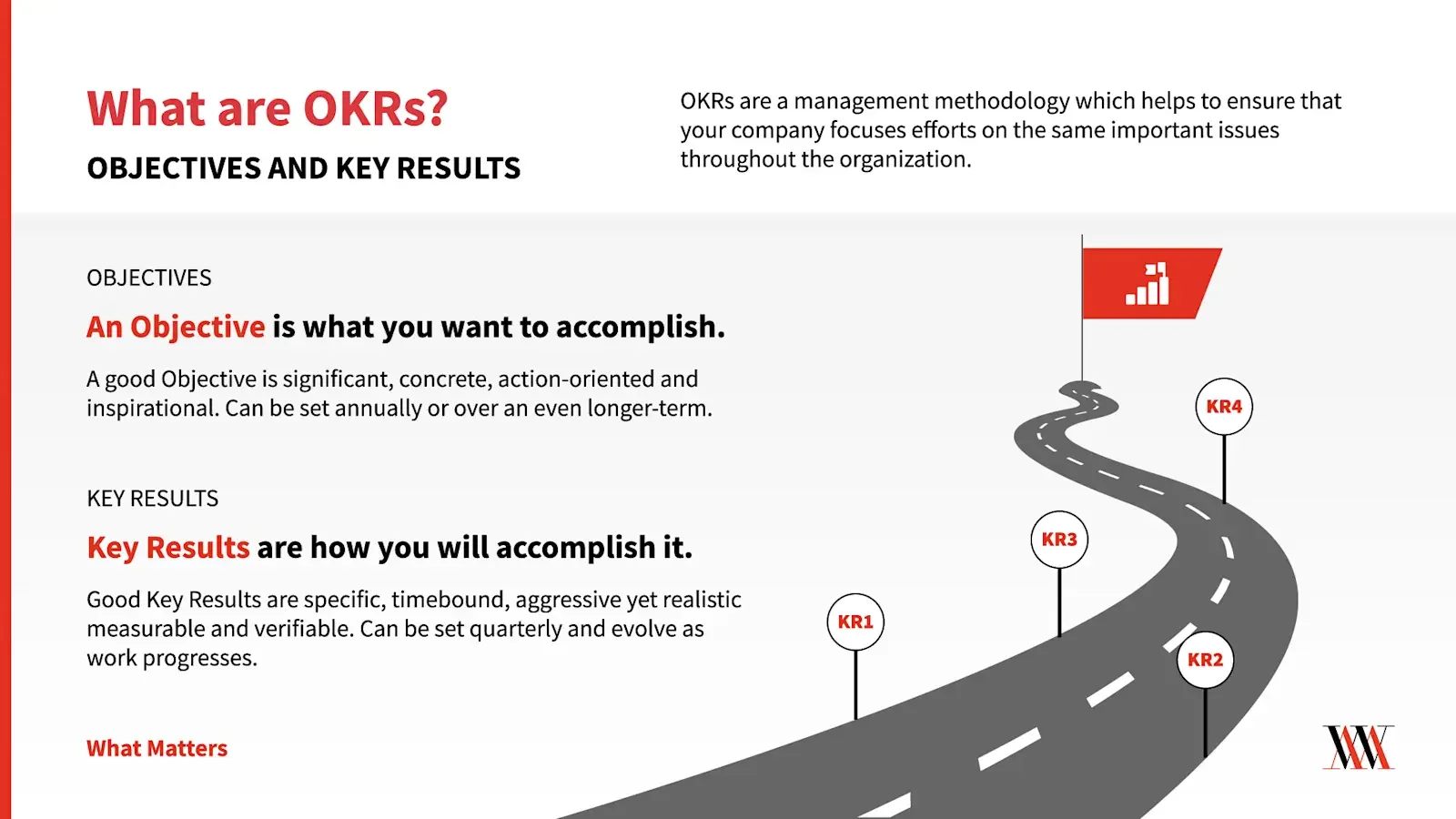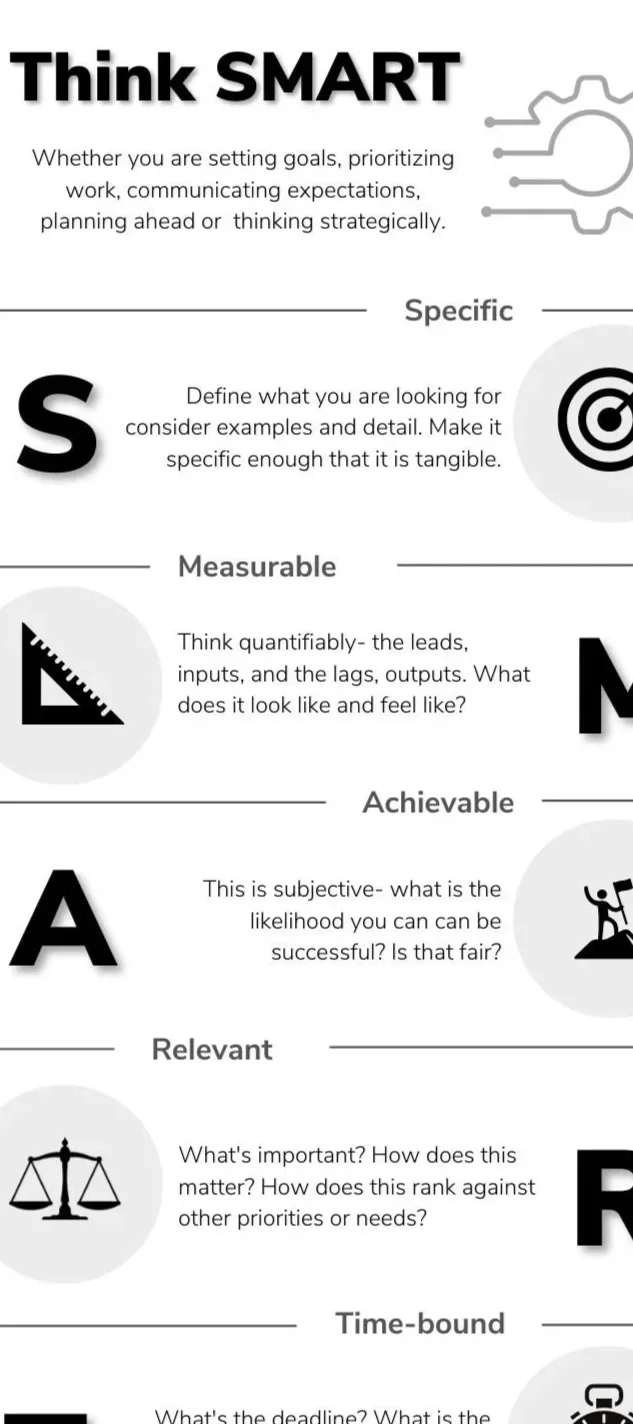Setting Clear and Impactful Goals: A Key Competency for Effective Leadership
Welcome to Monthly Best Praxis, Talent Praxis's newsletter dedicated to sharing actionable insights and proven strategies for leadership development. Each month, we dive into key topics and competencies that help leaders drive performance, align teams, and create lasting impact. In this issue, we explore how setting clear and impactful goals is essential for effective leadership.
As leaders, one of the most critical competencies — the observable behaviors that drive success — is the ability to set clear and impactful goals. This competency is more than simply defining objectives; it’s about creating focus, alignment, and accountability that enable individuals and teams to perform at their best. When leaders demonstrate this behavior effectively, they establish priorities that connect daily work to the organization’s broader vision and ensure everyone understands both expectations and desired outcomes.
Let’s take a closer look at the skills, attributes, and experiences that strengthen a leader’s ability to consistently demonstrate this behavior.
Achieving Success Through a Combination of Skills, Attributes, and Experience
Sets Clear and Impactful Goals -Establishes meaningful objectives that drive performance.
Below are examples of skills, attributes, and experiences that support the potential for the competency. Infinite combinations of strengths in various skills, attributes, and experiences can generate success in this competency.
Examples of skills supporting:
Strategic Thinking – The ability to connect individual, team, and organizational objectives to ensure goals are aligned with broader business priorities.
Measurement & Evaluation – The ability to define success metrics, track progress, and assess outcomes to ensure goals drive meaningful impact.
Prioritization – Skills in identifying what matters most, sequencing objectives effectively, and focusing resources on the highest-value outcomes.
Examples of attributes supporting:
Decisive – Able to make timely, well-informed decisions that guide teams toward meaningful goals.
Accountable – Takes ownership of commitments, models follow-through, and holds self and others responsible for achieving results.
Collaborative – Actively involves team members and stakeholders in shaping goals, fostering alignment and shared ownership.
Examples of experience supporting:
Cross-Functional Leadership – Experience leading initiatives that require alignment and goal-setting across multiple teams or departments.
Strategic Planning – Hands-on experience creating and executing goal-setting processes that tie team objectives to organizational strategy.
Performance Management – Experience setting measurable performance goals, tracking progress, and coaching individuals or teams toward achievement.
A self-assessment worksheet for leaders to reflect on how effectively they set clear and impactful goals, using a scale from "Never" to "Always."
Practical Steps for Leaders to Develop This Competency
Define Team Purpose and Goals: Clarify what your team is trying to achieve, why it exists, and how it contributes to the organization’s broader objectives.
Collaborate on Goal-Setting: Involve your team in shaping the goals to build alignment, shared ownership, and engagement from the start.
Clarify Success Criteria: Establish clear success metrics for each goal so expectations are transparent and progress can be measured.
Integrate Goals into Daily Work: Ensure goals reflect and improve your team’s core responsibilities—not just new initiatives. Goals should guide day-to-day work, not add to it.
Use Goals as a Coaching Tool: Leverage goals in regular check-ins, performance conversations, and feedback to reinforce priorities and development.
Common Challenges and How to Overcome Them
Vague or Overly Broad Goals
Many leaders struggle with setting goals that are too high-level or unclear. This creates confusion about what success looks like.
Overcome it: Use the SMART framework (Specific, Measurable, Achievable, Relevant, Time-bound) to sharpen goal clarity. Revisit goals regularly and refine them based on progress and changing context.
Misalignment Between Individual and Organizational Objectives
Even well-written goals can fall short if they don’t align with company strategy.
Overcome it: Ensure every goal connects explicitly to broader priorities. Use team meetings to link individual goals to company outcomes and reinforce alignment in one-on-one check-ins.
Goals That Reflect Personal Advancement, Not Team Outcomes
Leaders sometimes set goals centered on personal growth (e.g., “get promoted”) without connecting them to how the team delivers value.
Overcome it: Anchor goals in team performance and business impact. Ask: “How will achieving this goal improve outcomes for the team or organization?” Promotions follow when you create results through others.
Treating Goals as Extra Projects Instead of Core Work
Leaders often treat goals as new initiatives layered on top of their existing workload, rather than framing them as improvements to core responsibilities.
Overcome it: Goals should clarify and enhance the work you already do—not add more. Set goals that improve how your team operates day to day, ensuring better execution, efficiency, or alignment with strategic priorities.
Too Many Competing Priorities
Trying to do too much dilutes impact and creates confusion.
Overcome it: Prioritize ruthlessly. Ask: What will make the biggest difference? Establish a clear sequence for achieving objectives and say no to initiatives that distract from high-impact work.
Connecting to Other Leadership Competencies
The ability to set clear and impactful goals is deeply connected to several other leadership competencies. It requires Thinks and Works Strategically—leaders must understand the broader business context and anticipate priorities to set goals that matter. Aligns Individual and Company Goals ensures that each team member’s objectives support larger organizational success, while Manages Performance and Accountability depends on having clear expectations in place. Additionally, Shares Information Effectively plays a critical role; leaders must communicate goals and their purpose with clarity to foster alignment and engagement across the team.
Apply Your Learnings
Take 30 minutes this week to review the current goals for your team. Are they clear, measurable, and aligned with organizational priorities?
Reflect on whether each goal supports your team’s core responsibilities—not just new initiatives, but improvements to daily work.
Engage your team in a quick conversation to confirm shared understanding and identify any gaps in alignment. Even one clarified goal can improve focus, accountability, and performance across your team.
Explore More
About Talent Praxis
Cultivating Leadership Impact
Our work at Talent Praxis focuses on helping senior leaders identify the strategic behaviors that drive success, so they can lead with greater confidence, clarity, and impact. We partner with organizations to design custom leadership development programs that integrate executive coaching, assessments, and training, delivering measurable results and elevating leadership effectiveness.
Why custom leadership development programs?
Leaders define the direction and culture of an organization. Leadership development programs result in:
Increased Productivity and Performance
Higher Employee Engagement and Retention
Improved Financial Performance
As your company and market evolve, so must your leadership. Our custom leadership development programs are designed to meet your organization’s unique needs, empowering leaders with the skills to drive engagement, foster success, and deliver measurable results.





